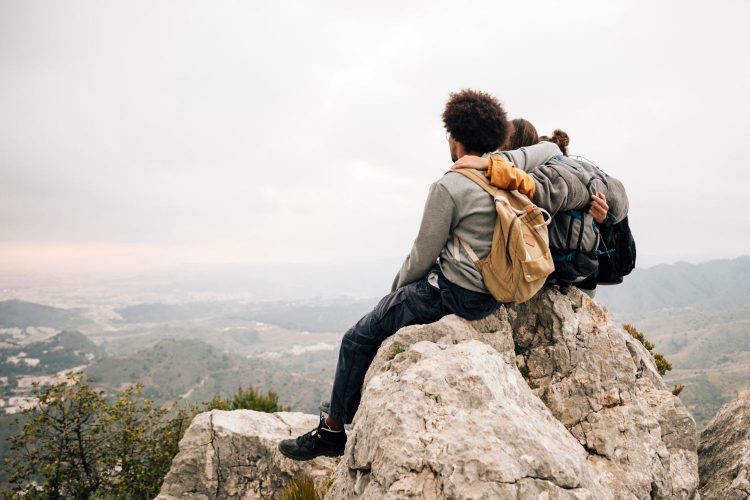Backpacking is one of the most rewarding ways to travel, offering a unique opportunity to immerse yourself in nature, explore new cultures, and challenge yourself physically and mentally. Whether you’re a seasoned backpacker or a novice looking to embark on your first adventure, there are a few essential tips, tricks, and pieces of gear that will help you make the most of your trip. In this article, we’ll cover everything you need to know to plan and execute a successful backpacking trip.
Choosing a Destination
The first step in planning a backpacking trip is choosing a destination. The world is full of amazing places to explore, from rugged mountain ranges to pristine beaches and everything in between. Some popular backpacking destinations include:
- The Appalachian Trail in the Eastern United States
- The Pacific Crest Trail in the Western United States
- The Camino de Santiago in Spain
- The Inca Trail in Peru
- The Himalayas in Nepal
When choosing a destination, consider factors like weather, terrain, and culture. Do your research to make sure that the destination you choose is a good fit for your skill level and interests.
Planning Your Route
Once you’ve chosen a destination, it’s time to plan your route. This will involve deciding how many miles you want to cover each day, where you’ll camp each night, and what landmarks or attractions you want to see along the way. Use maps, guidebooks, and online resources to plan your route in advance.
It’s also a good idea to familiarize yourself with the regulations and permits required in the area you’ll be backpacking. Some areas require permits for backcountry camping or have restrictions on campfires or food storage. Make sure you know the rules before you go to avoid any legal trouble.
Packing Your Gear
Packing your backpack is one of the most important steps in preparing for a backpacking trip. You’ll need to strike a balance between bringing enough gear to keep you safe and comfortable while also keeping your pack light enough to carry for miles on end. Here are a few key items to consider when packing your gear:
- Shelter: A tent or shelter will protect you from the elements and provide a comfortable place to sleep. Look for a lightweight and durable option that is easy to set up and take down.
- Sleeping bag: A good sleeping bag will keep you warm and comfortable at night. Look for one that is appropriate for the climate you’ll be backpacking in.
- Backpack: Your backpack will be your home away from home, so choose one that is comfortable to wear and has enough space for all of your gear.
- Food and water: You’ll need to bring enough food and water to sustain you for the duration of your trip. Look for lightweight and calorie-dense options, and plan your meals in advance.
- Clothing: Bring enough clothing to keep you warm and dry, but don’t overpack. Look for lightweight and moisture-wicking options that are easy to layer.
- Navigation: Maps, a compass, and a GPS device can help you navigate the trails and stay on course.
- First aid kit: A first aid kit can help you treat minor injuries and illnesses on the trail. Be sure to include items like bandages, pain relievers, and insect repellent.
Check out the Gear List on ProBlogn.com
Preparing for the Trail
In addition to packing your gear, there are a few other things you can do to prepare for the trail:
- Train: Backpacking is physically demanding, so it’s a good idea to train for your trip in advance. Build up your endurance by hiking or walking with a weighted pack.
- Practice setting up camp: Before you hit the trail, practice setting up your tent or shelter to make sure you know how to do it quickly and efficiently when you arrive at your campsite.
- Break in your gear: Make sure you break in your hiking boots and any other gear before you hit the trail. This will help prevent blisters and other discomforts.
- Test your gear: Set up your tent, try out your stove, and test your water filtration system before you leave for your trip. This will help ensure that everything is in working order.
- Leave no trace: When you’re on the trail, make sure you follow the principles of Leave No Trace. This means packing out all of your trash and waste, camping at designated sites, and respecting wildlife and other hikers.
On the Trail
Once you hit the trail, there are a few things to keep in mind to ensure a safe and enjoyable trip:
- Stay on the trail: Staying on designated trails helps protect the environment and prevents erosion.
- Pace yourself: Backpacking is a marathon, not a sprint. Take breaks as needed and listen to your body.
- Stay hydrated: Drink plenty of water and bring a water filtration system to ensure you have access to clean water.
- Be aware of wildlife: Respect wildlife and keep a safe distance. Store food properly to avoid attracting animals.
- Be prepared for emergencies: Carry a first aid kit and know how to treat common injuries like blisters, cuts, and sprains.
Wrap-Up
Backpacking is an amazing way to explore the world, push yourself out of your comfort zone, and connect with nature. With the right preparation, gear, and mindset, anyone can embark on a successful backpacking trip. Remember to choose a destination that fits your interests and skill level, plan your route in advance, pack the right gear, and prepare for the trail. On the trail, stay safe and respect the environment and other hikers. With these tips and tricks, you’ll be well on your way to an unforgettable backpacking adventure.









